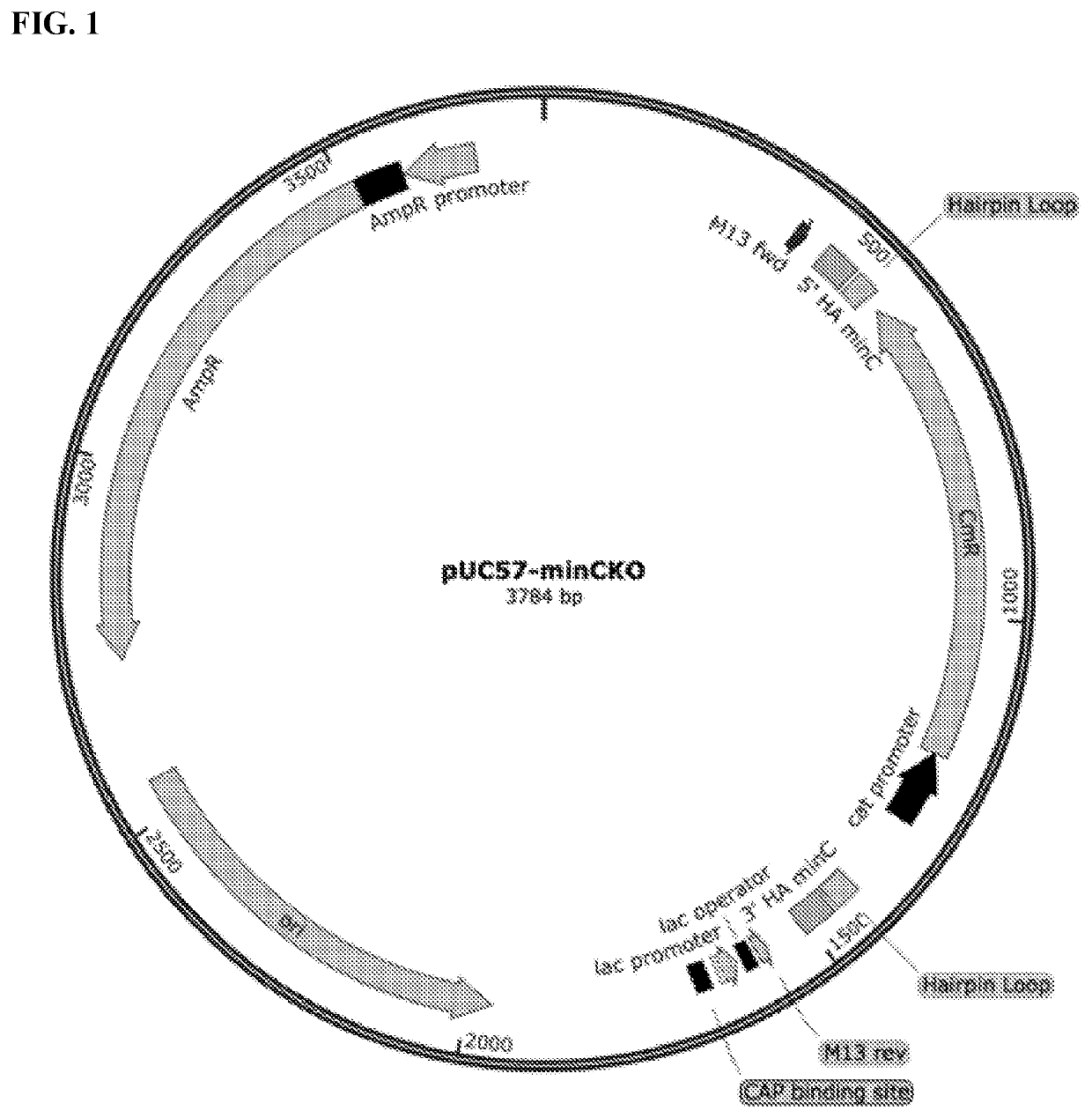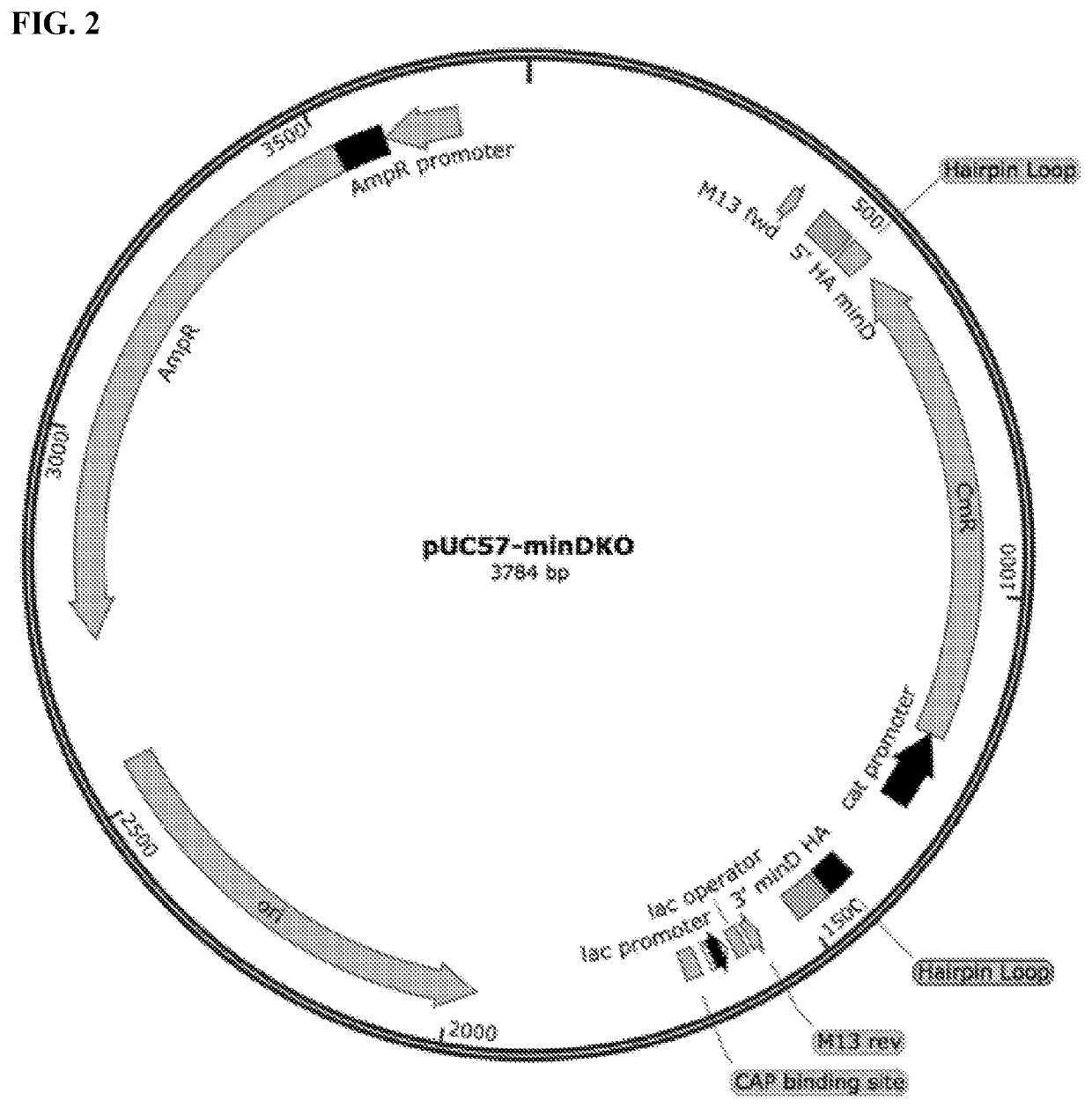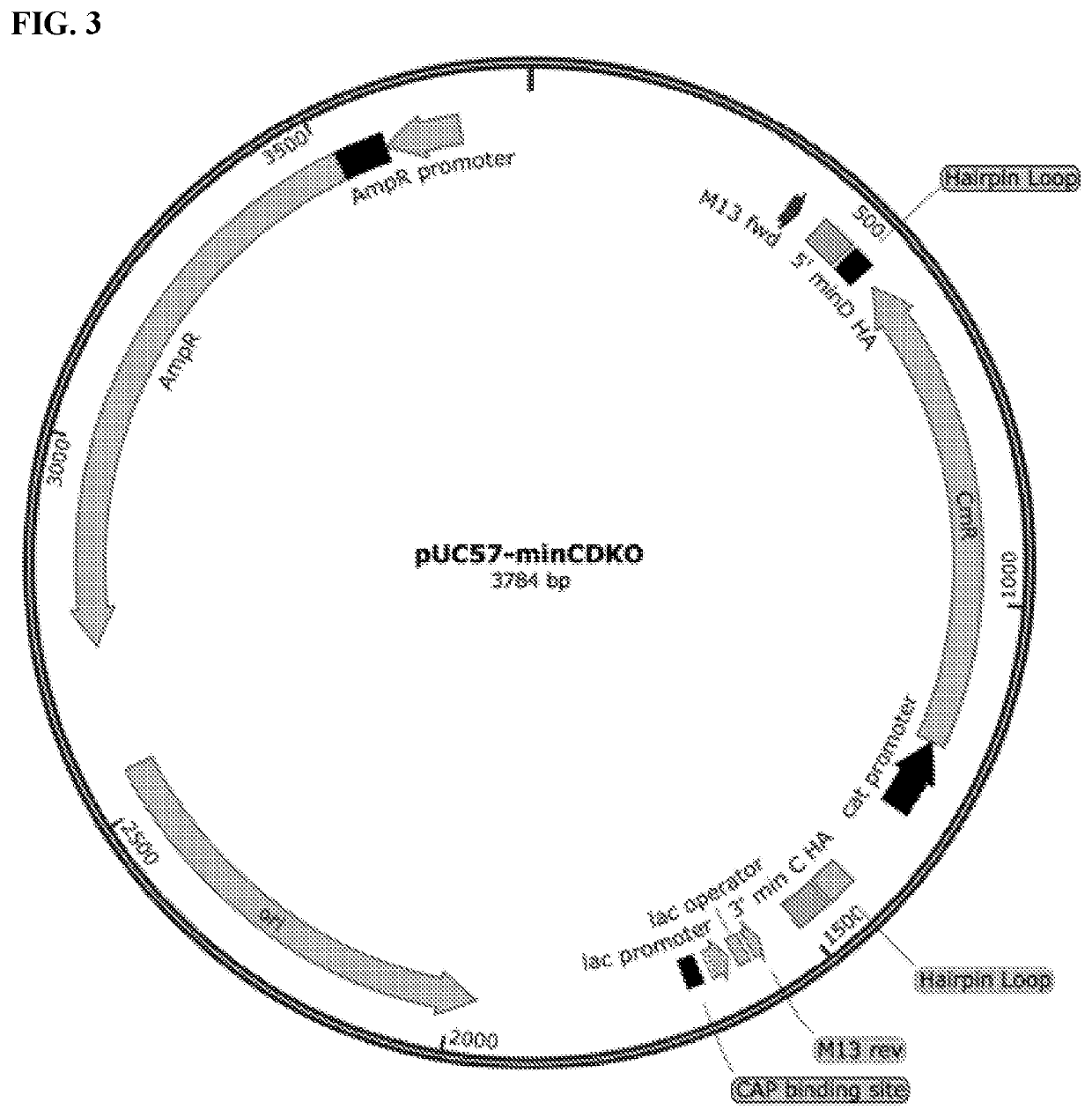Compositions and methods for the encapsulation and scalable delivery of agrochemicals
- Summary
- Abstract
- Description
- Claims
- Application Information
AI Technical Summary
Benefits of technology
Problems solved by technology
Method used
Image
Examples
example 1
n of Protease-Deficient Minicells
[0279]The success of these knockouts was determined by PCR amplification (Eppendorf Mastercycler 5333) and morphological characterization using the Laxco LMC4000 microscope (40× Objective, brightfield and fluorescent LED light sources) in conjunction with the Zeiss Sigma VP HD field SEM (UVA Advanced Microscopy Core). Based on the results shown in FIGS. 17A and 17B, it was determined that the minC, minD, and / or minC / D knockouts produced the minicells closest in morphological characteristics to the original wild type P678-54 strain producing minicells (Adler et al., 1967, Proc. Natl. Acad. Sci. USA 57:321-326; Inselburg J, 1970 J. Bacteriol. 102(3):642-647; Frazer 1975, Curr. Topics Microbiol. Immunol. 69:1-10). As an example, FIG. 17B shows the minicells in which minC gene is deleted.
[0280]To further investigate which gene knockout was responsible for producing minicells closest to the minicell-producing wild type p678-54 strains, the Lambda Red homo...
example 2
ation of CBM Expression Cassette into Minicells
[0294]The genetically modified minicell-producing bacterial strain was transformed with a linker protein fused CBM expression plasmid.
[0295]The CBM-encoding gene was inserted into the AIDA-1 surface expression cassette of the pAIDA-1 vector using KpnI and SacI restriction sites, which allows the CBM protein to be expressed and displayed by the fusion with the transmembrane autotransporter protein AIDA-1 (Adhesin Involved in Diffuse Adherence) as shown in FIG. 4B. This construction was conducted with primarily designed pAIDA-1 plasmid (from Addgene, Cambirdge, Mass.) in which the CBM-encoding gene was ligated into the passenger domain within the AIDA-I autotransporter using KpnI and SacI sites as illustrated in FIG. 4A. The tags existed on the pAIDA-1 plasmid prior were used for further analysis on CBM expression. After the ligation is completed, the 6×His tag and HRV3C site are located at N-terminus of the CBM-encoding gene and the Myc ...
example 3
ction
[0301]The transformed strain was grown overnight in a 5 mL culture with the appropriate antibiotic. The next day, 1:100 inoculation (4.5 mL of overnight culture in 550 mL of 2×YT media) was performed in 2×YT media plus appropriate antibiotic. The 2×YT media provided the surplus of nutrients necessary for efficient protein production. Once the culture reached the exponential growth stage (OD˜0.4), it was induced with 1 mM IPTG and is incubated at 30° C. overnight. The culture was analyzed the next day for CBM production.
[0302]After overnight IPTG induction, the sample was removed from the incubator shaker and poured into three 250 mL centrifuge bottles, 150 mL of sample in each. The bottles were spun down at 2,000 rcf to pellet the bacterial cells. The supernatant was transferred to three clean 250 mL centrifuge bottles. The supernatant was spun down at 10,000 rcf to pellet the minicells. The minicells were resuspended in PBS. The volume depends on the number of encapsulation va...
PUM
| Property | Measurement | Unit |
|---|---|---|
| Fraction | aaaaa | aaaaa |
| Fraction | aaaaa | aaaaa |
| Fraction | aaaaa | aaaaa |
Abstract
Description
Claims
Application Information
 Login to View More
Login to View More - R&D
- Intellectual Property
- Life Sciences
- Materials
- Tech Scout
- Unparalleled Data Quality
- Higher Quality Content
- 60% Fewer Hallucinations
Browse by: Latest US Patents, China's latest patents, Technical Efficacy Thesaurus, Application Domain, Technology Topic, Popular Technical Reports.
© 2025 PatSnap. All rights reserved.Legal|Privacy policy|Modern Slavery Act Transparency Statement|Sitemap|About US| Contact US: help@patsnap.com



